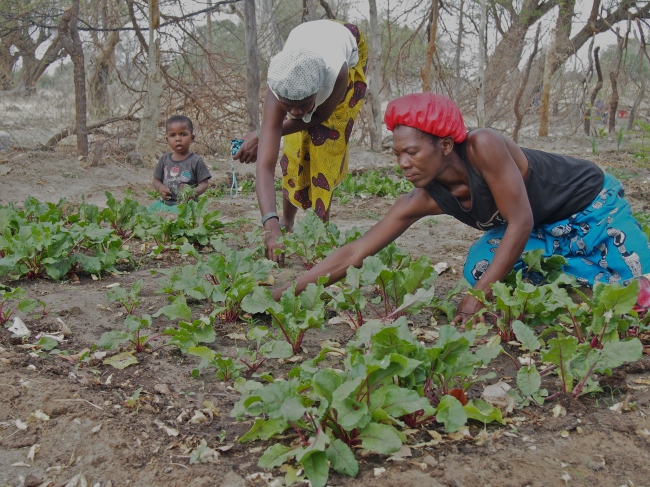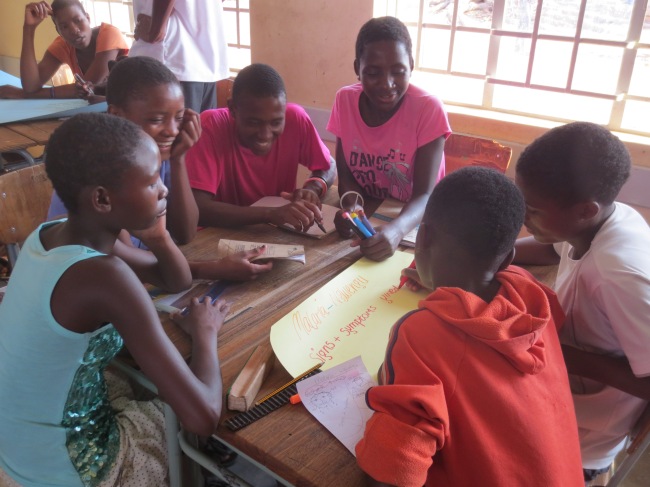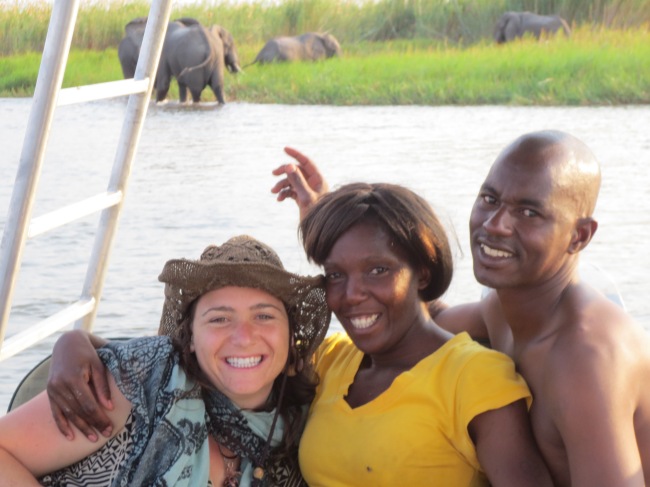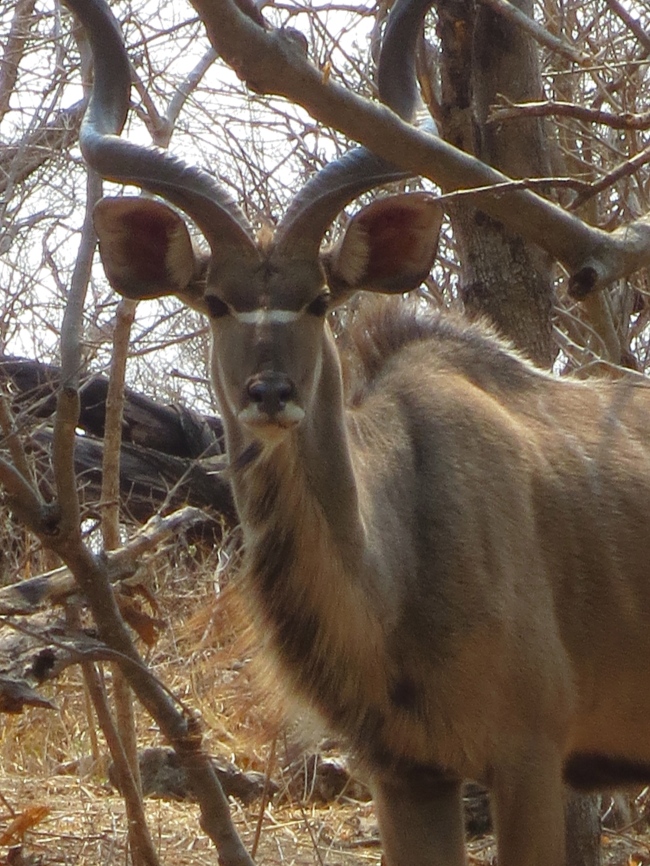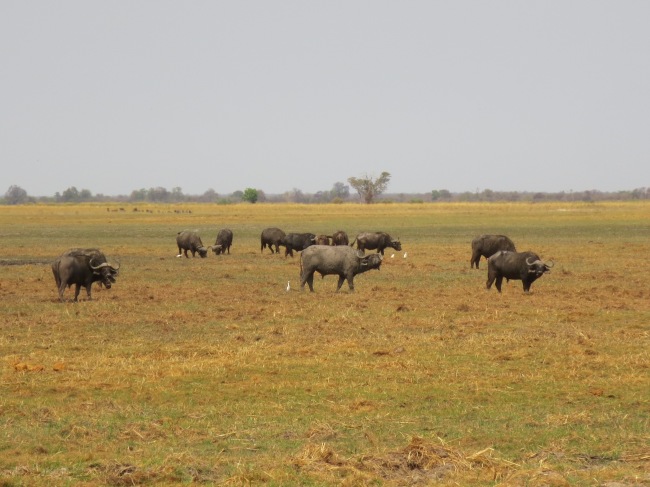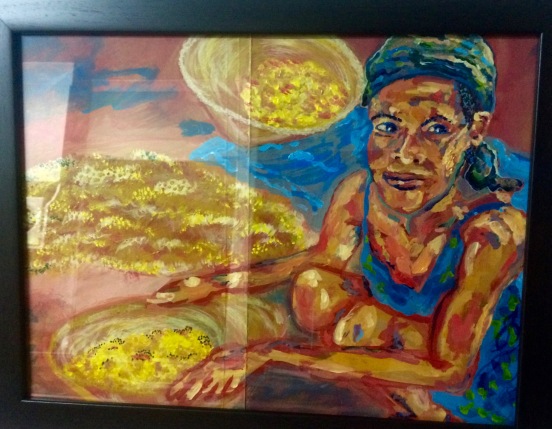
Many of you are probably wondering where I am, assuming I left Namibia or just left behind my blog. June 3rd marked my final day of being an “active” Peace Corps Volunteer and my last day in Namibia. Now I am considered a “Returned” Peace Corps Volunteer (RPCV) since the organization says you never cease serve the global community. That said, I haven’t “returned” to the US just yet. I am in South Africa and will remain traveling around the southern African continent until July 27th.
I’ll try to provide a recap on the final months of my Peace Corps service, my current travel plans and where I’m going next. March marked three years living in Namibia and I can honestly say year three included some of the most exciting days of my work life on the CDC team and some of the most home-sick moments I’ve ever felt. Life and work has been extremely rewarding and challenging and it took on a new dimension between months 29-38 in Namibia. I often questioned if I actually fared better in my mud hut on the river than my air-conditioned flat. In my modern flat I reconnected with a morning routine blending up green smoothies and embraced NPR daily news streams. Surprisingly, it was opening a refrigerator; the ease of flushing the toilet, hopping into a warm shower compounded with endless frustration from poor skype internet connections that made me miss home most. That said, I think it was challenging to have spent 2 years learning one language, Thimbukushu, then moving to a new area and community with a different language and culture. I felt an attachment to the community who had taken me in for my first two years, a level of isolation living alone and the discomfort with a large town filled with taxis and metal gates separating neighbors. That said, never before being a morning person, I found enjoyment with wake-up workouts and a 7:30am in the office schedule (wow, anyone who knows me well should be shocked by this statement).
CDC
Everyone on the CDC team in Namibia is brilliant, really! What made the team most remarkable, besides great management, was the absence of ego despite extremely competent and specialized skill sets of each individual. Everyone worked collectively, clearly focused on one goal, HIV epidemic control in Namibia. In my small northern office I was constantly in awe at my colleagues depth of knowledge, pragmatic approach and dedication to the mission. The Field Officers invited me on their site mentoring visits, encouraged me to take on projects and welcomed my support on theirs. They mentored me, allowing me to ask endless questions and provided continuous guidance. I got to travel across three regions and understand not just what was not working but what was. Observing the tremendous challenges facilities were facing was matched by seeing how much progress was taking place despite the barriers. There was never a lack of work to be done or project ideas to build a path. Here are some highlights of my work (and play) over the past 6 months.
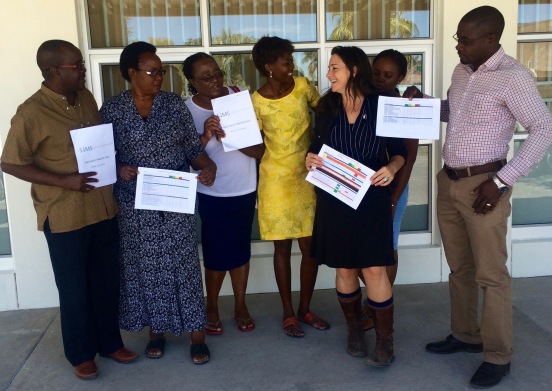
Our CDC Field Officers for 5 regions holding up our SIMS tools and completed dashboard report triumphantly. SIMS (Site Improvement Through Monitoring) is the monitoring and evaluation tool for PEPFAR (US Presidents Emergency Plan For AIDS Relief). The assessment tool(s) are giant (“compressive”) and include a series of questions to assess HIV care and treatment for hospitals, clinics, health centers and NGO’s. For example we look to see if all babies born to HIV+ moms are getting the prophylaxis drugs to prevent HIV transmission or if facilities have TB infection control measures in place. The tool is a beast but insightful.
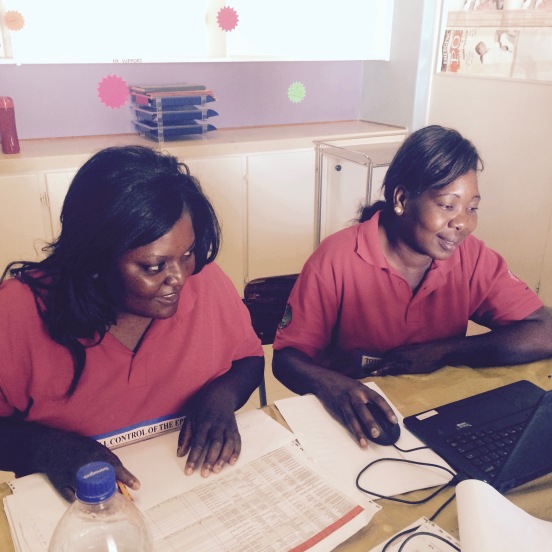
Total Control of the Epidemic (TCE) Trackers Juliana and Louida updating an electronic health patients tracking list. We attempted to track 7,588 patients who appeared to be missing HIV treatment for 3 or more months. Unfortunately many had been missing treatment for greater than 5 years. Not taking HIV medication is dangerous for the health of the individual infected and the people he or she can pass the virus onto. I worked with the facilities Data Clerks to create a plan to track the patients and we organized project review meetings with the clinic staff. We were able to track 43% of the patients on the list finding many active on ART treatment at other health facilities. The project provided insight to address challenges needed to improve HIV patient retention rates, a crucial component of epidemic control.
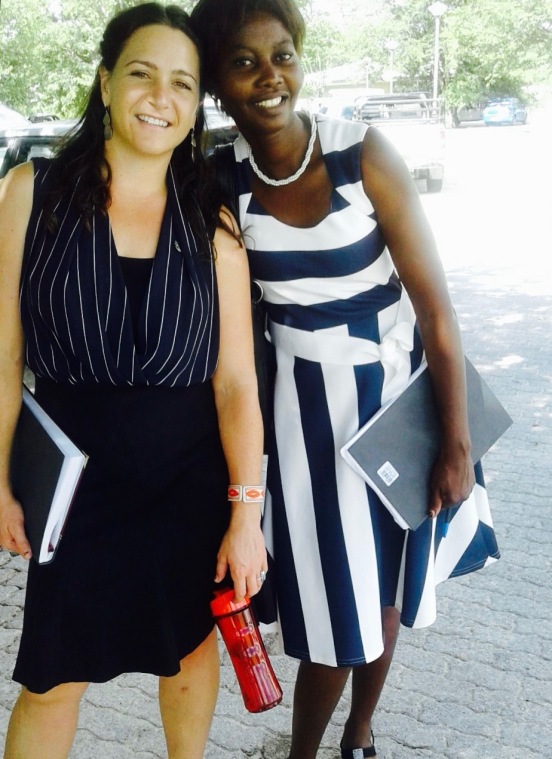
Site monitoring visit in Okongo District with Field Officer Linea Hans. We worked on many projects together including patient retention, pediatric HIV disclosure and Teen Clubs, and viral load tracking. It is amazing how much you can learn when you are surrounded by a passionate visionary with tremendous experience.

Immanuel Sheefeni, an HIV/AIDS Activist, speaking at the first of two HIV Workshops for Peace Corps volunteers and their community counterparts. The YEAH program was taken over by new volunteers and the 4th camp ran last month. Passing on the YEAH torch gave me time to join the PC HIV Working Group. Putting on HIV trainings for Peace Corps Volunteers has been something I have wanted to do after seeing that volunteers across different sectors outside of health lack knowledge and confidence to provide HIV awareness education or there HIV awareness is 10 years outdated. I had the opportunity to mold the schedule and create the presentations for the trainings pulling from country data and our old YEAH curriculum playbook.
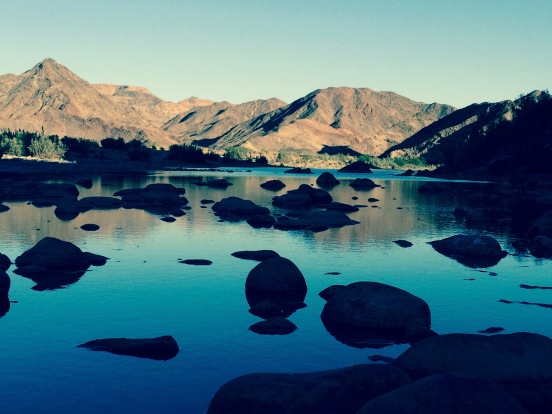
I checked one more box on my bucket list when hiking Fish River Canyon in Southern Namibia this May. The second largest canyon in the world, this grueling 5-day hike included baboons and wild horses. Waking up to crescent moons lingering over the top of the canyon and being mesmerized by the various animal tracks along the water reminded me of the importance to find wilderness more often.
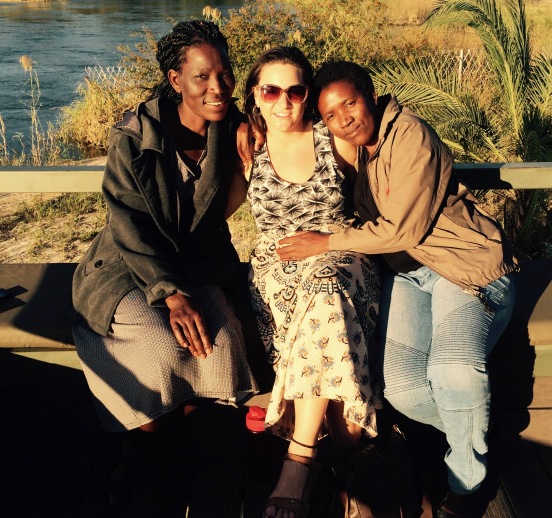
Saying goodbye to my homestay family was challenging but I do believe technology is making it easier for people to stay connected from around the world. My homestay sisters Erika (left) and Toto (right). We went to Toto’s work my last day visiting the village and I ended the night with my homestay mother sitting around a small fire.
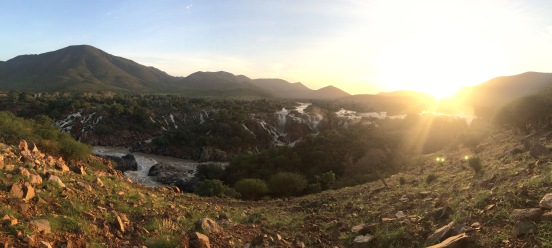
Exploring more of Namibia’s beauty hiking around Epupa Falls after summer rains
Where Am I now?
I just wrapped up 4 safari days at Kruger National Park in South Africa with 3 lovely friends (Jazmine Jackson, Rita Minjarez, Gretchen Klein) who flew over for a Southern Africa road trip adventure. We drove through Swaziland yesterday before reaching our current destination, Durban. We had a wonderful day in Durban walking through one of the oldest botanical gardens viewing exotic plants and the elaborate Indian wedding taking place. We wrapped up the night eating Indian food next to the Indian Ocean. Tomorrow we head to Drakensburg, along the border of Lesotho, for 2 days of hiking around giant green mountains. I’ll continue onto Zimbabwe after my girlfriends leave and then onto Malawi to spend a month with another amazing friend, Emily Cohen. This is Em’s second visit to the continent and we are planning to explore mountain mushroom farms in Livingstonia, get out on Lake malawi for a 3-day kayak trip and do some volunteering.
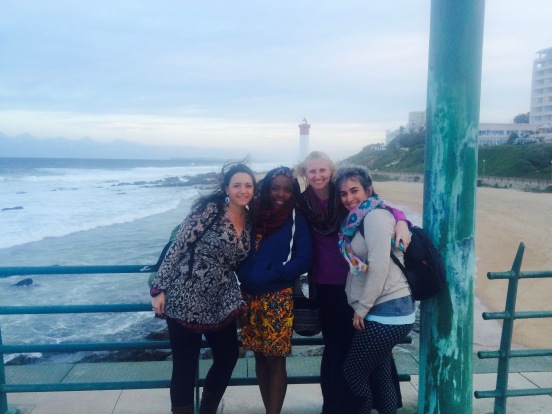
What’s next?
I’m moving to New Orleans to start a Masters of Public Health at the end of August. In this two-year program I hope to apply my experience over the past 3 years to expand on my knowledge and follow my curiosity for community health and developing programs that make an impact. We will see what my Tulane adventure brings.
Looking for Scholarships – Please ask around. If you are aware of any scholarship opportunities please send them my way. Who ever thought “follow your passion” could come with such a major price tag? I’m looking to apply for some scholarships to assist me with covering my cost for graduate school and welcome any advice on how to make this happen.
My Next Blog..
I will not be returning to Namibia in the near future and will not be continuing with this blog. Thank you to everyone who has been reading it and who has sent me messages. It has been an eventful journey and I’ve felt blessed having supportive friends and family cheering me on along the way. I’m excited to return home to be closer physically to so many special people who surround me with love no matter where I am.
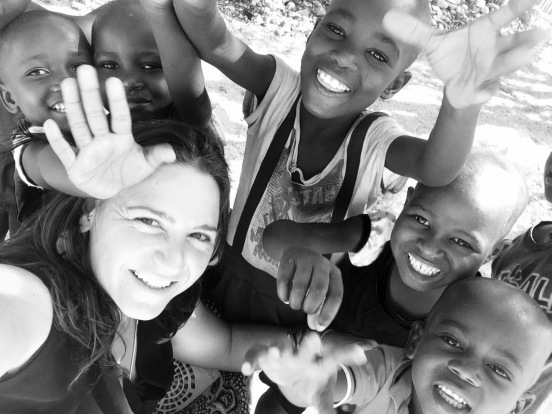 Natumera
Natumera
Thank you-Thimbukushu














































































 Spinning fire on Mumbo Island beach
Spinning fire on Mumbo Island beach






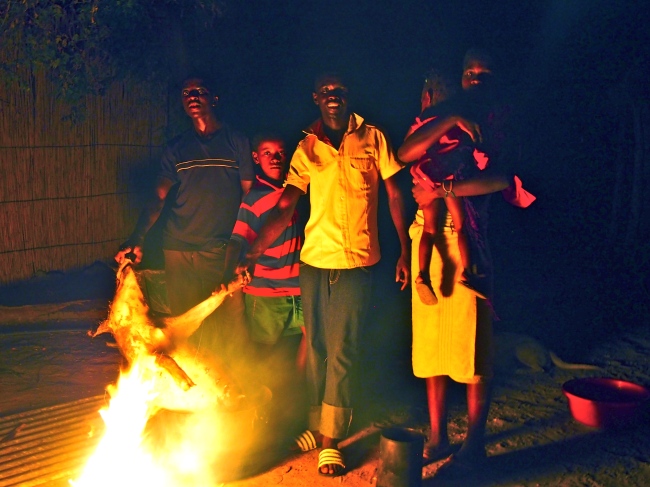 Glen seemed most occupied with the excitement of trying to remove all the hairs off the pig with my the Leatherman tool. My younger brothers had decided that the only way to remove the hair would be to boil it off the pig. The way they tried to fit the giant pig in the comparably small pot made for an entertaining evening.
Glen seemed most occupied with the excitement of trying to remove all the hairs off the pig with my the Leatherman tool. My younger brothers had decided that the only way to remove the hair would be to boil it off the pig. The way they tried to fit the giant pig in the comparably small pot made for an entertaining evening. 